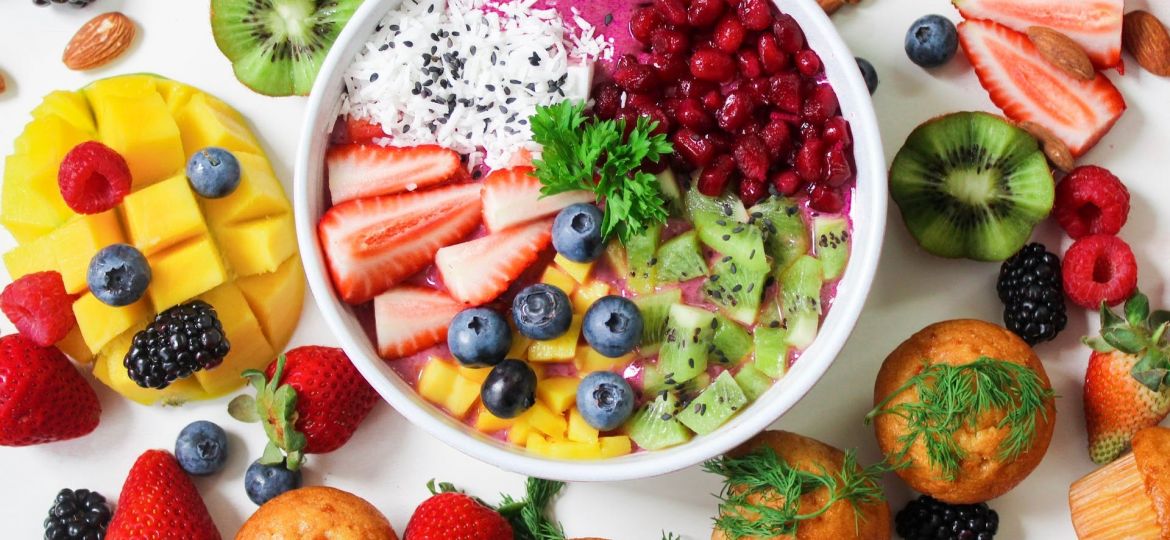
Certain foods/minerals/vitamins can reinforce each other. Calcium and iron, for example, are not a good nutritional combination because they hinder each other’s absorption. However, it may also be better to eat or drink certain things together. Is it possible to compile an overview of what are good food combinations and what are less good combinations?
Although we can answer this question in detail, in this piece we will limit ourselves to some general guidelines about food combinations. Just know that everyone’s body is unique, so what works for one person may not necessarily work for another.
Here are some food combinations that may be considered helpful, as well as some that you may want to avoid.
GOOD FOOD COMBINATIONS
- Vitamin C and Iron: Vitamin C can increase the absorption of iron from food. For example, drink orange juice with an iron-rich breakfast (such as whole grains) or salad (with lentils, tomatoes, peppers or berries).
- Calcium and Vitamin D: Vitamin D aids in the absorption of calcium. This is often found together in dairy products, but can also be combined by eating vitamin D-rich foods such as oily fish or eggs together with calcium-rich foods such as leafy vegetables or dairy.
- Fats and fat-soluble vitamins: Fat-soluble vitamins (A, D, E, K) are better absorbed when eaten with fats. For example, a salad with leafy vegetables (rich in vitamin K) with an olive oil-based dressing.
- Protein and carbohydrates: This combination can help manage blood sugar levels and promote satiety. For example, a whole wheat sandwich with chicken or turkey or whole wheat cereal with Greek yogurt.
- Omega-3 fatty acids and antioxidants: Omega-3 fatty acids are sensitive to oxidation. Consuming antioxidant-rich foods (such as berries, nuts, seeds, dark chocolate, spinach, etc.) along with sources of omega-3 fatty acids (such as oily fish) can help protect fats from oxidation.
LESS GOOD COMBINATIONS
- Iron and calcium: These two minerals can hinder each other’s absorption when consumed at high levels. It is usually not a problem in a balanced diet, but may be a concern for people taking supplements.
- Iron and tannin (in tea and coffee): Tannin (a type of polyphenols, a group of chemicals that occur naturally in many types of plants and are responsible for the bitter taste) can hinder the absorption of iron. It is therefore advisable to consume tea and coffee separately from iron-rich meals.
- Zinc and copper: These two can also hinder each other’s absorption. While this is usually not a problem in a balanced diet, it can also be a concern for people who take supplements.
- Proteins and simple sugars: This combination can lead to a faster absorption of sugar and therefore a spike in blood sugar levels. For example, it may be helpful to avoid sugary sauces with high-protein meals.
- Calcium and oxalates: Oxalates, or oxalic acids, are organic acids that occur naturally in a number of foods and are produced as waste products in the body. Found in foods such as spinach, rhubarb, beets, nuts, chocolate, tea, wheat bran and almost all dry beans, they can bind to calcium and form a crystalline structure that can prevent calcium absorption.
- Protein-rich foods and alcohol: Alcohol can affect the breakdown of proteins in the body and hinders protein synthesis. The downside to this is that it can hinder muscle growth and recovery, as protein synthesis is crucial for this. Additionally, it can have negative effects on overall health, including reduced immune function and increased vulnerability to injury.
In practice, these combinations often do not cause significant problems for most people, especially if they eat a balanced and varied diet. If you have specific dietary restrictions or health concerns, it is advisable to speak to a nutritionist or doctor for personalized advice.

